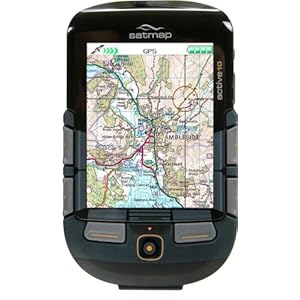GPS Accuracy
How far and how high - how accurate are handheld GPS devices

Geo-coding and GPS Accuracy - How accurate is GPS data?
Geocoding means recording the GPS location of a point (a waymark) or a route.
So, you have a GPS device, like a smartphone, and want to record your route - distance and ascent. It should be really accurate - right?
The distance measurement is very accurate, so long as you:
- Switch your device on a few mins before you start to let it settle down with the satellite signals. Each time you switch on your device, it will download a file of the latest satellite location fixes from within the satellite signal - this will take a couple of minutes
- Stop recording your route when you are stationary. When you are stationary, the location fix is less accurate, and the device will start recording a 3 dimensional spider's walk around your location. Stop 20 minutes for a cup of tea, and it will record 2km of distance, and a few hundred feet of ascent.
So, assuming you stopped recording while you were stationary, the distance measurement will be very, very accurate (if you didn't stop, editing out the random 'stop' points in the GPS record isn't easy). With a good GPS device, and a clear view of the sky, accuracy will be within 3 metres 95% of the time. (so 5% of the time, it will be greater than 5 metres, as it will be without a clear view of the sky)
A typical GPS device will record 1 point every metre. So a walk's GPS route may have 20,000 points. Software - websites like OS Get-a-map or the PC applications like Anquet/Memory Map, can compact the route by smoothing it to a more reasonable 200 to 300 points or so by reducing the accuracy to within a tolerance of 5 metres or so. Its also a bit easier to display a line with 300 points, rather than a line with 20,000 points. Smoothing works by using a mathematical algorithm to:
- remove unnecessary points without loosing too much accuracy, e.g. Douglas-Peucker (easier to understand).
- draw a curved line through the points, e.g. Bezier Curves (complex)
Elevation accuracy however, isn't so good. First GPS isn't as accurate for elevation as it is for horizontal location. Second, all those small errors are significant compared to the figure you are trying to measure. 20,000 figures each with 5m (clear sky) to 15m (near trees, cliffs, the 5% of the time) errors add up to a significant proportion of the figure you need to measure. For example, say you are walking on a flat path, the device may measure 4, 5, 4, 5, 6, 5 , 3, 5, 3, 5, 5 (6m of ascent over 11 points, so how many over 20,000... ). The inaccuracies are much worse near trees or buildings. On a 20km walk, the ascent can easily b overestimated by 500 metres - more if the device wasn't switched off when stationary
The way to fix this is to smooth the figures (remove the small ups and small downs). But to do this you have to remove so many ups and downs you actually remove some of the ones that really existed and that you needed to measure.
It turns out that the best way by far to record elevation accurately is to actually discard the figures that your device records, and use a GPS route mapping website which uses an Elevation Service instead. These calculate the elevation from satellite radar measurements of the earth's surface. Google for example have an elevation service with a 50m grid of height measurements for the world's surface. Give it a location, and it will extrapolate the elevation for you. Fine, unless you are near a cliff, in which case it will say you are half way up, rather than at the top or the bottom. The UK's Ordnance Survey have a contour (i.e. vector rather than grid) based product, which should be exceptionally accurate, but it is not clear which websites use it.
These issues explain why there are often so many differing ascent figures for given walk. Smoothing out ups and downs of less than 5 metres will give a different figure from smoothing to a tolerance of 10, 15 or even 50 metres. There is no 'correct' answer.
In summary, to measure a route accurately, mark it up on a GPS mapping website, and let it calculate the distance and altitude gain/loss for you.
Which Elevation?
Elevation gain or loss is straightforward, but absolute height is a little more tricky
- OS Altitude: OS maps use elevation based upon mean sea level at Newlyn in Cornwall between 1915 and 1921. However average low tide varies around the UK due to tides and changes in gravity due to variations in the Earth's density (e.g. the differance between east coast and west coast is 0.8m) . Not to mention rises in sea level...
- GPS Altitude: GPS devices use the WGS84 (World Geodetic System) standard ellipsoid (squashed sphere) model of the Earth's shape - it differs from OS elevation (as they 2 systems use different models of the Earth's shape) by up to 40 metres
- "Height above sea level" Altitude: The EGM 2008 standard defines a more accurate model of the Earth's surface that takes into account local variations in gravity (caused by local differances in the Earth's density).